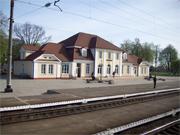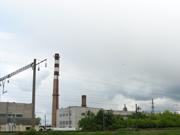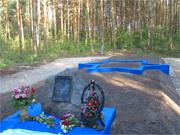Tourist trail: temples, culture and stories of Zhabinka’s heart.
Tourist routes of the Zhabinka District - “ZHABINKA GOSTINETS”
Жабінка – Здзітава – Ленінскі – Ацячызна – Хадасы – Чыжэўшчына – Малыя Сяхновічы – Вялікія Сяхновічы – Хмелева.
The word “gostinets” in the Belarusian language has two meanings and many nuances. For some, a gostinets appears as a wide, welcoming road that lies easily underfoot; for others, a gostinets is a friendly gift. For many visitors to the Zhabinka area both meanings are appropriate: our region has always been hospitable to guests, who have left their good mark on the “Zhabinka Gostinets”.

This route tour begins with a short excursion around Zhabinka. The journey can start from the railway station, which recalls the history and the present state of the district centre, located at the crossroads of routes to Brest, Minsk and Pinsk. It was the railway that contributed to the rapid development of the settlement of Zhabinka in 1871. It still remains an integral part of town and district life.
We should also draw attention to nine monuments dedicated to the events of the Great Patriotic War, and to the monument to internationalist soldiers — a burial mound with a bell, erected in 2001 as a reminder to Zhabinka residents of their countrymen who died in Afghanistan. The modern development of the central city streets — Kirova, Svobody, Lenina — which form a kind of heart of the town, may also be of interest.
Then it is possible to temporarily leave the district centre to reach the village of Zdzitava, where the 500-year-old Svyato-Mikitskaya Church stands, beside which grow the centuries-old, beautiful natural monuments — the Zdzitava oaks.
Afterwards it is necessary to return to the town to, after noting the 19th-century monument — the Holy Intercession Church, visit the station for children's and youth tourism and local lore.

An excursion to one of the largest enterprises in Belarus, JSC “Zhabinka Sugar Factory”, may also prove interesting — it produces one in every five kilograms of sugar in the country. The factory, founded in 1963, has long and strong traditions. Its products are environmentally clean; sugar production is carried out without chemical additives.
Leaving Zhabinka, we proceed along the Kamenets–Fedzkavichy road and then along the Brest–Minsk highway. The aim of the journey is places tied to notable events of our region. The next small stop will be the settlement of Leninsky — the youngest settlement in the district. On its basis in 2005 the first agrotown in the Zhabinka area was established. However, the new here is closely intertwined with the past.
Within the settlement is the historic park Atiachyzna, laid out in the mid-19th century by the Belsky princes. On the park grounds a 600-year-old giant oak still grows to this day.
In the settlement of Leninsky itself one can see a monument to the countrymen who fell in the Great Patriotic War, and in the local secondary school — a bust of V.U. Migel, who did not return from the distant Afghan war.

Next the traveller moves in the direction of Khadasy. Near this village there is an archaeological monument — a barrow (kurgan) testifying to very ancient settlement of this territory, as well as the mass grave of victims of fascism at the site of the large-scale shooting of the Jewish population in September 1942.
The next stop on the route opens up places connected with the name of the famed General Tadeusz Kościuszko. The village of Chyzhyevshchyna is the area around which, on 17 September 1794, the famous Krupchytsy battle took place between insurgent units under General K. Serakovsky and Russian General A.V. Suvorov. In commemoration of this event a true historical and cultural complex has been created in the village, which includes the St. Vladimir Church, built in 1894, a monument to Suvorov’s soldiers and a memorial chapel, honorably opened and consecrated in the autumn of 2004.
A continuation of the journey through Kościuszko’s places can be a visit to Malyya Syakhnovichi, which for several centuries has been visited by people wishing to pay homage to the famous son of the Belarusian land, T. Kościuszko. The village has a small memorial museum room dedicated to the life and work of the general, and the remains of the Kościuszko park have been preserved. In the centre of the village stands the only monument-bust to T. Kościuszko in Belarus (the work of local sculptor A. Vidatskaya, created in the 1930s).
One can also visit the nearby Vialikiya Syakhnovichi. In the local cemetery a chapel of the former manor owners has been restored. By the St. Nicholas Church, built by the Kościuszko–Syakhnovitsky family, lies the grave of the local priest Lyavontsiy, the father of Ignatius Zhaliazovsky (1800–1872), Bishop of Brest and a native of this village.
The final stop of the “Zhabinka Gostinets” should be a visit to the Transfiguration (Savior) Church and the male Orthodox monastery — places of numerous pilgrimages by believers from various corners of Belarus and from near and far abroad.